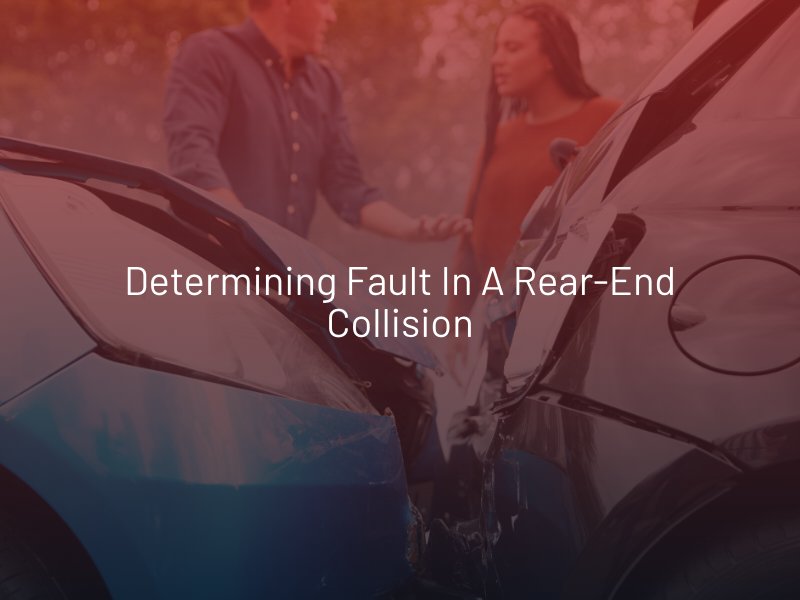Determining Fault in a Rear-End Collision
In most rear-end collisions, the driver who rear-ends another vehicle is presumed to be at fault. This is because drivers are expected to maintain a safe following distance and be prepared to stop or slow down to avoid a collision. However, fault is still decided on a case-by-case basis.

Liability for Rear-End Accidents in Nevada
Since Nevada is a fault-based state, liability for rear-end collisions is decided by determining which driver was negligent or failed to use reasonable care. Drivers have a duty of care to drive safely and follow traffic laws. When that duty is violated (e.g., speeding, texting, abrupt lane changes), they are considered negligent and responsible for any damage or harm they cause. Therefore, while there is a general presumption of fault on the driver who rear-ends another vehicle, this does not mean automatic liability. The presumption can be overcome if evidence shows that the driver who was rear-ended was also negligent or contributed to the accident.
How Fault is Determined for a Rear-End Accident
Determining fault in a rear-end collision normally involves assessing the actions and circumstances leading up to the accident. For example, an insurance adjuster will typically consider the following:
- Driver statements
- The police report and the officer’s opinion on the cause of the accident
- Witness statements
- The location and extent of damage to the vehicles
- Photos of the accident scene
- Any available surveillance or video footage of the crash and any other available evidence.
- Traffic violations
Each party involved will then be assigned a percentage of fault based on their degree of negligence in causing the accident. Under Nevada’s modified comparative negligence law, each driver’s compensation will be reduced by their percentage of fault. However, if a party is found 51% or more responsible for the rear-end collision, they cannot recover any compensation.
When Can a Leading Car Be at Fault in a Rear-End Collision?
Here are some examples of when a leading driver can be found at fault or partially to blame for a rear-end accident:
- Making an illegal turn
- Making an abrupt lane change without warning, so the rear driver cannot avoid a collision
- Failing to yield the right of way
- Driving with tail lights that are out or broken
- Backing up or out of a parking spot without looking
- Traveling too slow for the current traffic conditions
- Braking suddenly for no valid reason
- Failing to pull over to the side of the road for a mechanical problem with their vehicle
- Driving under the influence of alcohol or drugs
Disputing Fault After a Rear End Collision
If you disagree with an insurance company’s findings on fault in a rear-end collision, it is best to notify them in writing immediately. It is possible for your letter to lead to further investigation and a revised decision. However, if the insurer upholds their conclusion on fault, speak to a Las Vegas car accident lawyer as soon as possible if you have not hired one already. They can help you collect the evidence you need to support your claim and fight for the compensation you deserve.